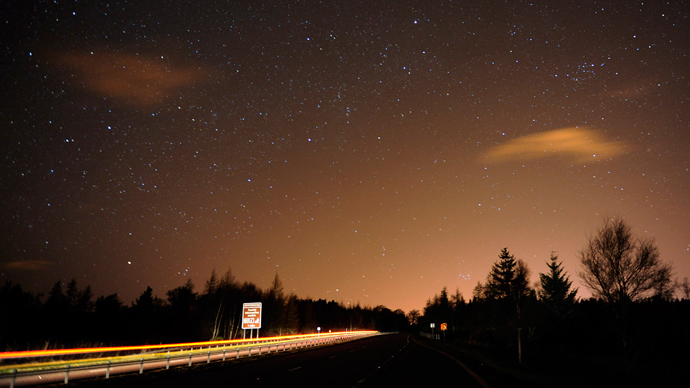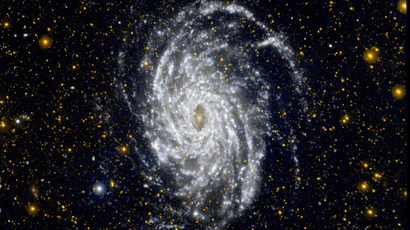Scientists find ‘lonely’ floating planet without a star

An international team of astronomers have accidentally found a ‘never before seen’ planet ‘floating’ without orbiting a star, some 80 light years away from earth. It is a mere 12 million years old, a newborn in space terms.
“We have never before seen an object free-floating in space
that looks like this. It has all the characteristics of young
planets found around other stars, but it is drifting out there
all alone,” said Michael Liu, research team leader at the
Institute for Astronomy at the University of Hawaii at Manoa.
The planet, now known as PSO J318.5-22 has a mass roughly six
times that of Jupiter and was formed only 12 million years ago.
While that sounds ancient, in planetary terms it is considered a
mere infant.
“I had often wondered if such solitary objects exist, and now
we know they do,” Liu said.
During the past decade, extrasolar planets have been discovered
at an incredible pace, with about a thousand found by indirect
methods such as wobbling or dimming of their host stars induced
by the planet. However, only a handful of planets have been
directly imaged, all of which are around young stars (less than
200 million years old). PSO J318.5-22 is one of the lowest-mass
free-floating objects known, perhaps the very lowest.
Hundreds of extrasolar planets have been discovered since the
mid-1990s. However, they are usually detected through indirect
methods that rely on them orbiting a sun – the techniques measure
a drop in the transmission of light as a planet passes in front
of its star. Only a handful of them were directly imaged.

However, this ‘lonely planet’ was accidently mapped as the team
searched for brown dwarfs – a type of ‘sub-stellar’ object which
emits a faint orangey-red glow to the human eye. The team was
using the Pan-STARRS 1 wide-field survey telescope located on the
Haleakala volcano of Hawaii’s Maui island.
The study was published in the Astrophysical Journal Letters.
Observations showed that while the planet indeed has similar
attributes to that of a gas giant orbiting a star, it lacked its
own. It further confirmed that it was not a brown dwarf, but a
young planet, which will greatly benefit those seeking to observe
it; as most planets with the same properties orbit young stars
(less than 200 million years old) which tend to be extremely
bright.
Its most unique aspect is its similar mass, color, and energy
output to directly imaged planets, the press release on the
university’s website says.
“PSO J318.5-22 is not orbiting a star so it will be much
easier for us to study. It is going to provide a wonderful view
into the inner workings of gas-giant planets like Jupiter shortly
after their birth,” Niall Deacon of the Max Planck Institute
for Astronomy in Germany, and a co-author of the study, said.















